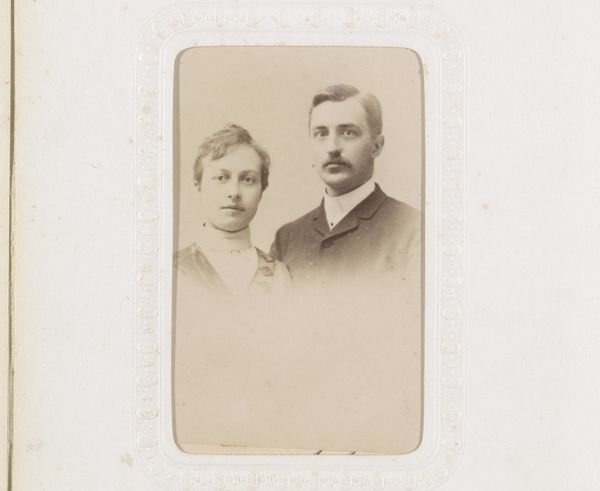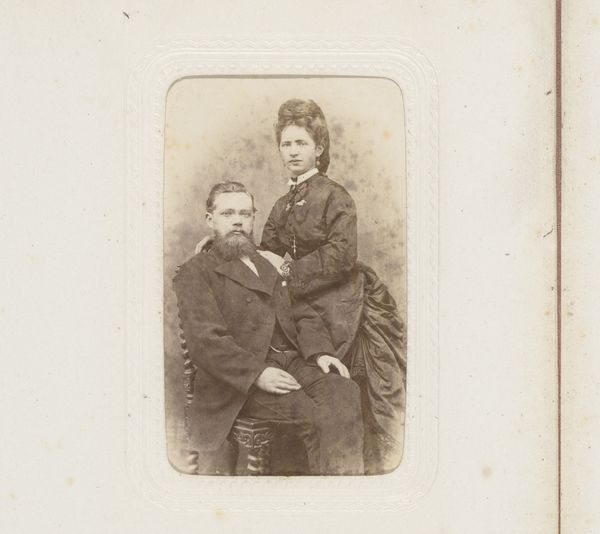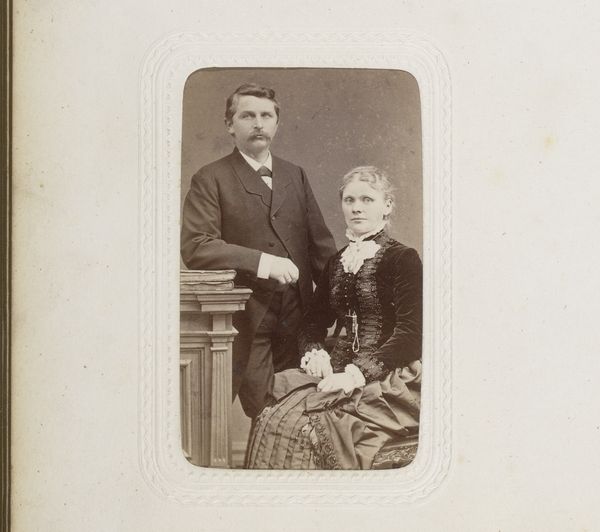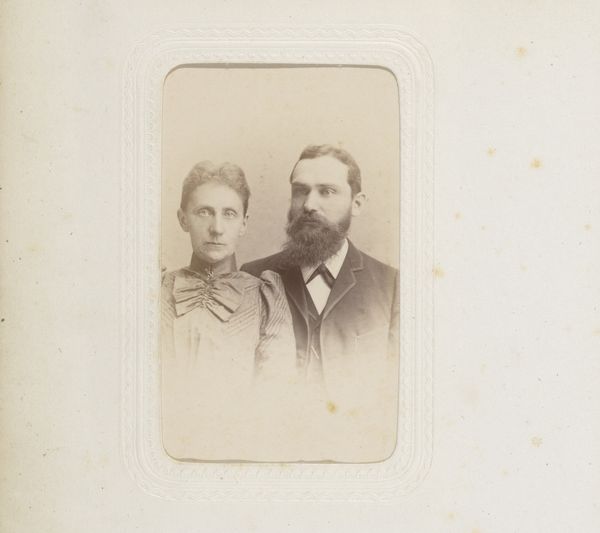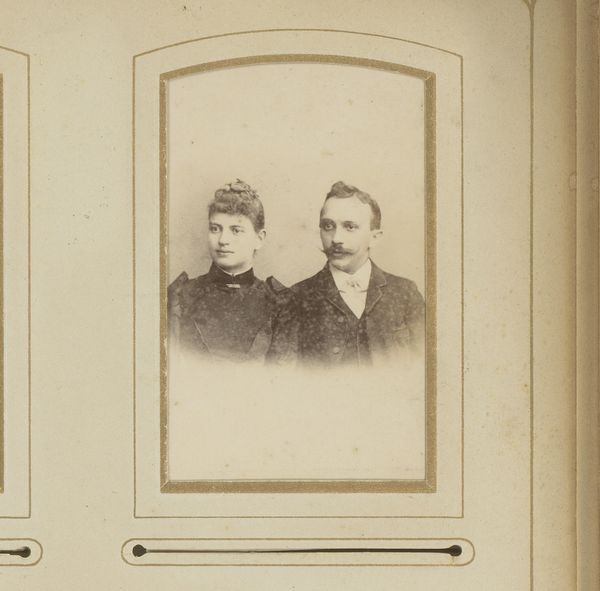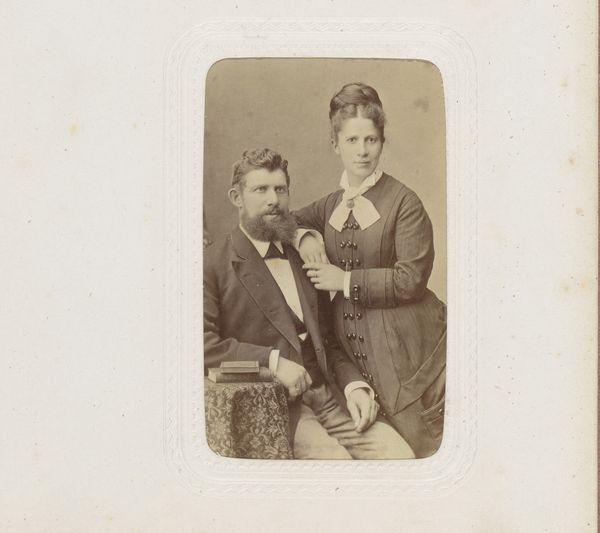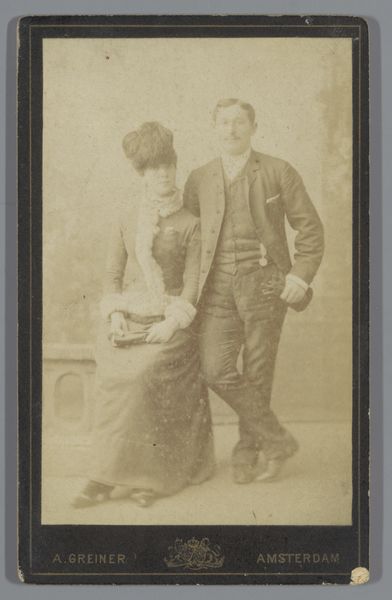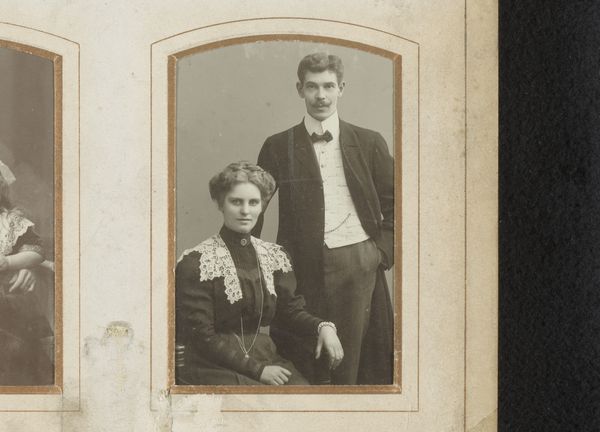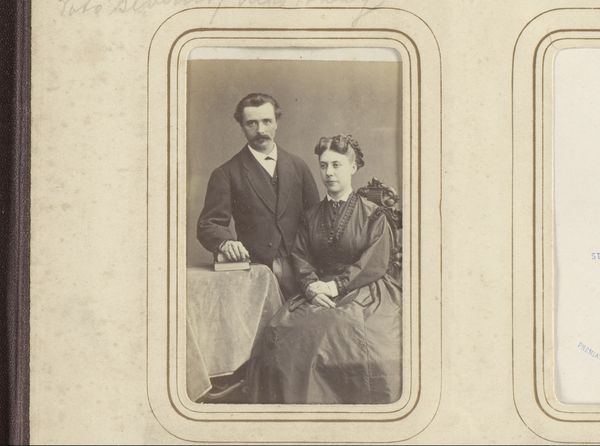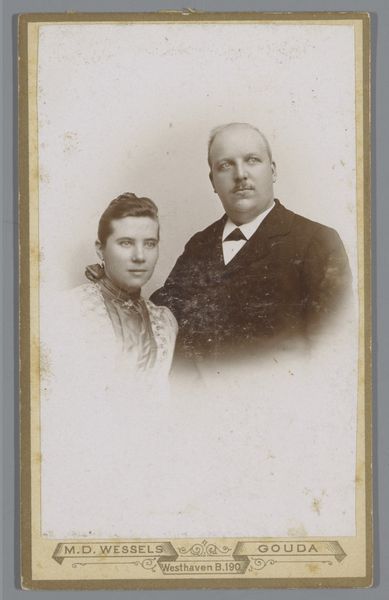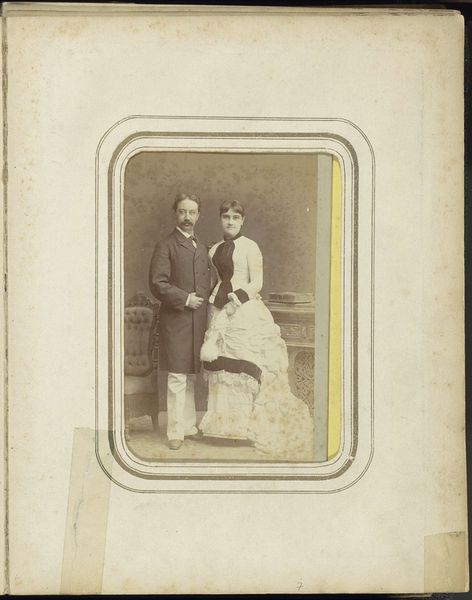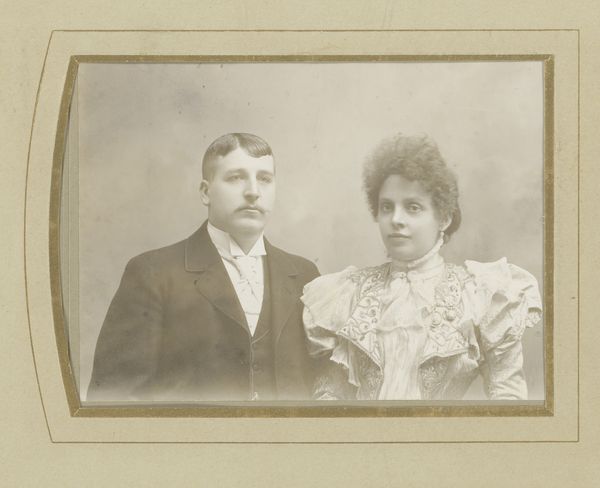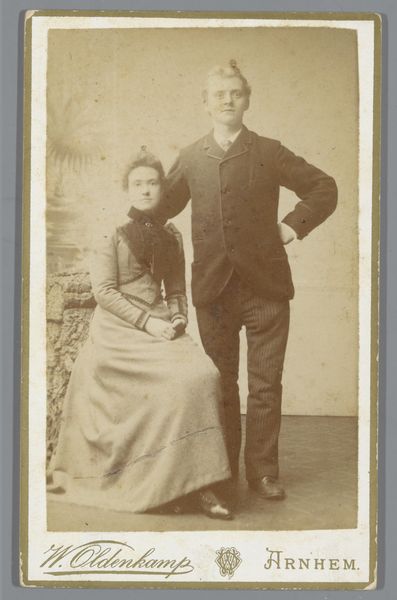
photography, gelatin-silver-print
#
portrait
#
photography
#
gelatin-silver-print
#
genre-painting
#
realism
Dimensions: height 103 mm, width 64 mm
Copyright: Rijks Museum: Open Domain
Curator: So, here we have a gelatin-silver print, dating from around 1885 to 1900, entitled "Portret van een onbekende man en een onbekende vrouw"—"Portrait of an Unknown Man and an Unknown Woman." It's attributed to Evert Antonius Kerkmeijer. Editor: Wow, look at them! They seem so serious, almost stern. I wonder what was going through their minds at that moment. It feels very posed, very deliberate. Curator: Precisely. Studio portraiture in this era was a rather formal affair, often intended to convey a sense of respectability and permanence. The development of photography, particularly the gelatin silver process, democratized portraiture, making it more accessible to the middle class. Editor: Accessible, yes, but still... that formality. The gentleman in his double-breasted suit and magnificent mustache looks like he's ready to rule a small country! And her, with the high-necked dress, she looks like she just accepted that task with a knowing smile. It gives me an odd sense of distance, almost an estrangement. Curator: That distance speaks to the societal norms of the time, certainly. Consider how gender roles influenced presentation: men projecting authority, women, perhaps, a quiet strength, coded within domesticity. Editor: Absolutely, the styling of that era creates a specific language, although I am still surprised about that certain rigid quality, as if happiness was only for Sundays and photographs were intended for historical evidence rather than pure emotion. Curator: In many ways they were. Family portraits such as these reinforced social bonds and served as visual testaments to status and lineage. Furthermore, in the context of a quickly changing world— industrialization, urbanization—such portraits anchored people to their perceived identities and origins. Editor: Makes sense. It's fascinating how much social weight can be held within a simple image of two anonymous people staring directly into the future, which is now our present. It does make you wonder who they were and what stories those silent faces could tell. Curator: Indeed. And that is, ultimately, where art—and history—meets the human imagination. Editor: What a trip through time, all packed into this frame! Food for thought, indeed.
Comments
No comments
Be the first to comment and join the conversation on the ultimate creative platform.
